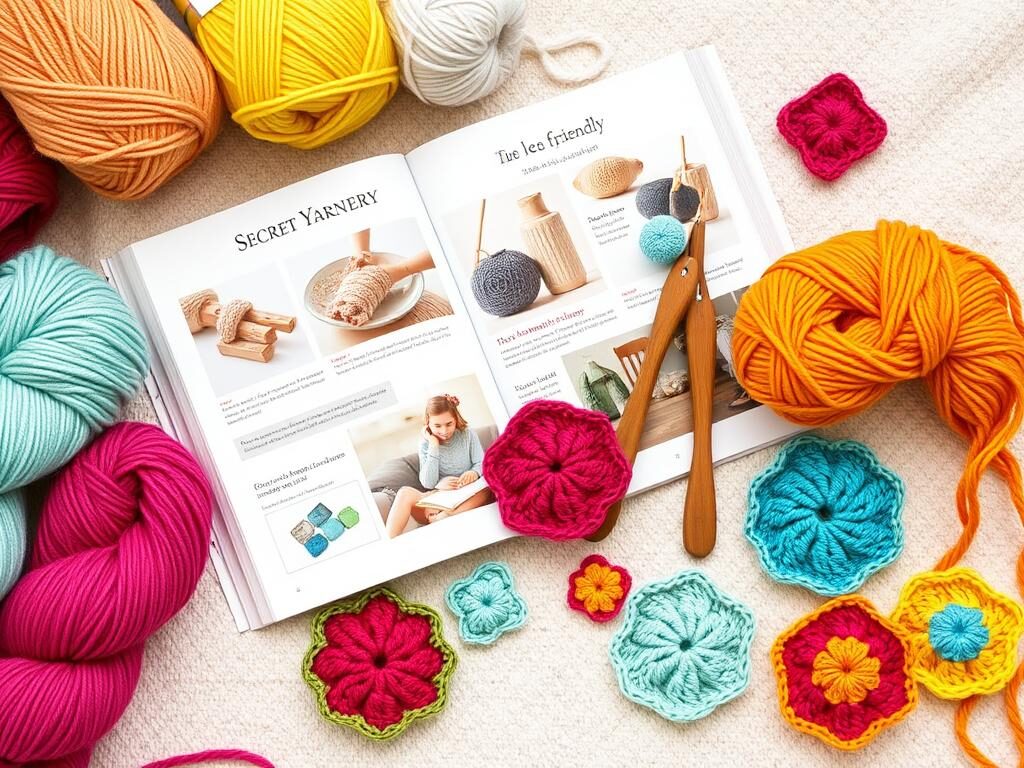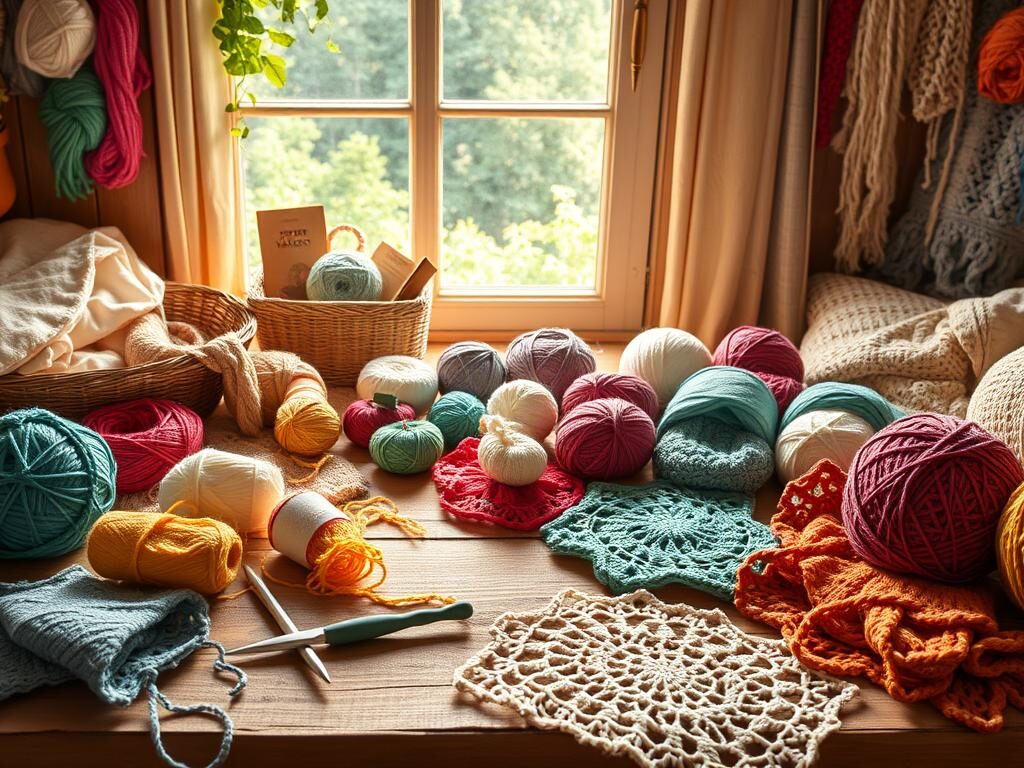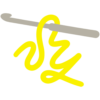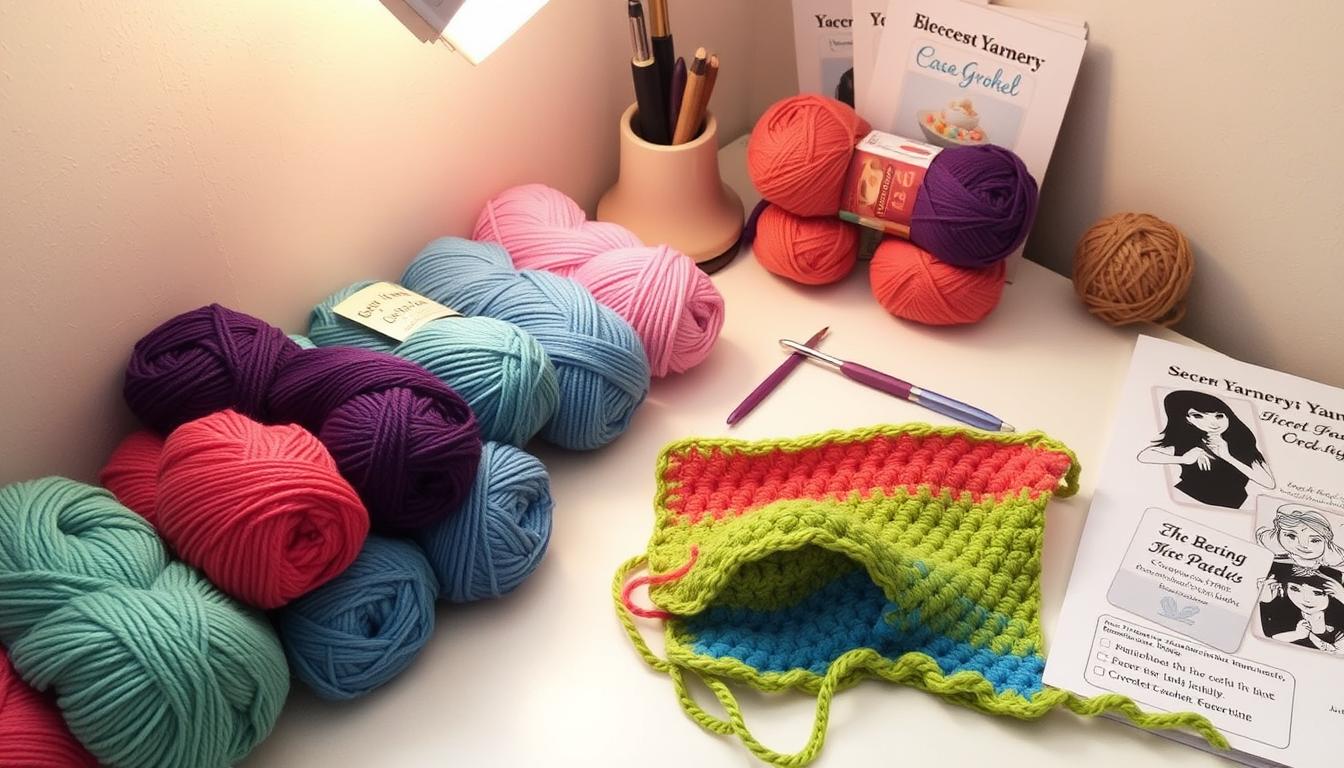How to Start Crocheting: Tips for Beginners
Crocheting is a timeless craft that not only allows you to create beautiful handmade items but also serves as a wonderful outlet for creativity and relaxation. If you’re looking to dive into this rewarding hobby, you’re in the right place! In this guide, we’ll explore essential tips and resources tailored specifically for those just starting their crocheting journey. From understanding the foundational crochet stitches for beginners to selecting the perfect beginner crochet kits, we’ll provide everything you need to make your learning experience enjoyable and successful. And for those who prefer hands-on guidance, we’ll also touch on some fantastic crochet tutorials for beginners that can help you master the basics in no time. Whether you dream of crafting cozy blankets or unique accessories, your crochet adventure begins here!
Key Takeaways
- Crocheting is a meditative and mindful hobby that can have mental health benefits.
- Crochet creates a more dense and structured fabric compared to knitting, making it ideal for certain projects.
- Experimenting with different yarns, hooks, and stitches is essential for beginners to find their personal style.
- Consistent practice and a willingness to learn from mistakes are key to improving crochet skills.
- Having the right tools and resources on hand can make the crocheting process much easier.
Get the Right Crochet Supplies
As a beginner crocheter, having the right supplies is key for a fun and easy crafting journey. You’ll need the perfect yarn and the most comfortable hooks. Let’s look at the essentials you’ll need to start.
For anyone eager to dive into the world of crochet, getting the right supplies can significantly enhance your crafting experience. As you embark on this creative journey, understanding the crochet basics is crucial. Start with selecting a good quality yarn that suits your project; yarn comes in various fibers, weights, and colors. Whether you opt for soft cotton for summer items or cozy wool for the colder months, the yarn you choose will impact the texture, drape, and overall look of your finished product. Pairing your yarn with the right crochet hook is equally important. Hooks come in various sizes, materials, and shapes, and finding one that feels comfortable in your hand will make your crocheting sessions more enjoyable.
Once you’ve gathered your yarn and hook, consider other helpful tools such as scissors, a yarn needle for weaving in ends, and measuring tape to keep track of your project dimensions. These essential supplies will make your crocheting smoother and more efficient, allowing you to focus on creating rather than struggling with what you have at hand. Additionally, as a beginner looking to learn to crochet, starting with easy crochet projects can boost your confidence and skill level. Simple items like dishcloths, scarves, or granny squares are perfect for practicing basic stitches while keeping the process enjoyable.
As you explore easy crochet projects, don’t hesitate to seek out online resources or community groups. Many websites and social media platforms provide tutorials and patterns that cater to all skill levels. Joining a crochet class or meeting with fellow crocheters can also provide valuable hands-on experience and inspiration. Engaging with others allows you to ask questions, share tips, and foster a sense of camaraderie, making the learning process even more enjoyable.
Ultimately, investing in the right crochet supplies is the first step towards developing your skills and creativity. With a proper setup, you’ll be well-equipped to tackle a variety of projects, from simple to complex. Before you know it, you may find yourself immersed in the delightful world of crochet, making beautiful pieces to cherish or gift. Happy crocheting!
Recommended Yarns for Beginners
The yarn you pick can greatly impact your beginner crochet kit. Brava Worsted yarn is a great choice. It’s affordable, comes in many colors, and is 100% acrylic, making it smooth to work with. Dishie 100% cotton yarn in worsted weight is another good option. It’s affordable and natural.
For those wanting to try wool, Mighty Stitch Worsted is a good mix. It combines the softness of acrylic with a bit of superwash wool.
Choosing the Best Crochet Hook
The crochet hooks you choose should feel good in your hand. Look for a hook with a semi-sharp head. It should not be too pointy or too rounded. Also, it should have a deep bowl to catch and pull the yarn easily.
The Clover Amour hook is a great choice for beginners. Make sure to match the hook size to your yarn or the pattern’s needs. There are two main grip styles: pencil and knife. Try them out to see what feels most natural for you.
| Crochet Hook Sizes | Hook Material | Grip Styles |
|---|---|---|
| Typically range from I (5.5mm) to L (8.00mm) for beginners | Aluminum, wood/bamboo, plastic, and steel | Pencil grip and knife grip |
Choosing the right supplies is crucial for your crafting journey. Invest in quality tools and materials that you’re comfortable with. This will help you create beautiful crochet projects.
Learn Proper Crochet Tension
Getting the right crochet tension is key for your projects to turn out well. It’s about how tight or loose your stitches are. This affects how your work looks and feels. Whether you’re new or experienced, learning to control your tension is vital.
Tight stitches can make your fabric stiff and distorted. Loose stitches can make it look uneven and sloppy. Finding the right balance is crucial. This is where a crochet tension regulator can really help.
A crochet tension regulator is a tool that helps you keep your yarn tension even. It ensures your stitches are the same size. This keeps your project looking right and feeling right.
There are other ways to manage your crochet tension too. Try using different hook sizes or changing how you hold your hook. Also, keep your yarn handling consistent. With practice, you’ll get better at controlling your tension. This will make your projects look great.
| Tight Tension | Loose Tension |
|---|---|
| More stitches per square inch | Fewer stitches per square inch |
| Stiffer, distorted fabric | Uneven, sloppy appearance |
| Difficult to block and shape | Easier to block and shape |
Remember, mastering crochet tension takes time and effort. But with patience and practice, you’ll get it right. Your projects will look professional and polished.
“Crochet tension is the foundation of your project’s success. Take the time to master it, and you’ll be rewarded with beautiful, consistent results.”
Master Basic Crochet Stitches
As a beginner, start with simple stitches to build your skills. The single crochet, double crochet, and half double crochet are great for beginners. Learning these stitches will prepare you for more complex techniques.
Beginner-Friendly Crochet Stitches
Begin by mastering these basic stitches:
- Chain Stitch
- Single Crochet Stitch
- Double Crochet Stitch
- Half Double Crochet Stitch
- Treble Crochet Stitch
- Slip Stitch
- Moss Stitch
Practice these stitches with a relaxed, loose approach. This ensures you do them right in your projects. Use video tutorials and diagrams to help you learn.
| Stitch | Description | Difficulty Level |
|---|---|---|
| Single Crochet | The most basic stitch, where you insert the hook, yarn over, and pull through the loop. | Beginner |
| Double Crochet | A taller stitch that involves yarning over before inserting the hook and pulling through the loop. | Beginner |
| Half Double Crochet | A stitch in between single and double crochet, where you yarn over before inserting the hook. | Beginner |
Mastering these stitches will help you create beautiful crochet projects. You can make cozy afghans and stylish accessories.
“The moss stitch is a versatile and beginner-friendly crochet stitch that can be used for a variety of projects, from blankets and scarves to sweaters and headbands.”
crochet for beginners
Starting your crochet journey can be both exciting and scary. But, with the right mindset and tips, you can become a confident crocheter quickly. Here’s how to start:
- Keep Your Stitches Relaxed and Loose: It’s normal to feel tense when learning something new. But, try not to hold your hook too tight. Loose, relaxed stitches make it easier.
- Practice, Practice, Practice: Read patterns before starting and practice new stitches. This will make you feel more comfortable when you need it.
- Don’t Be Too Hard on Yourself: Mistakes are common, even for pros. Be proud of learning and know your skills will grow with time.
Remember, crochet for beginners is about taking it one stitch at a time. With patience and a positive attitude, you’ll make beautiful projects soon. Enjoy the journey and have fun!

“Crochet is the art of using a hook to interlock loops of yarn, thread, or strands of other materials to create a fabric. It is a very versatile craft that can be used to create a wide variety of items, from clothing and accessories to home decor and toys.”
Avoid Common Crochet Mistakes
Starting your crochet journey can be very rewarding. But, you might face some challenges. Knowing how to avoid common mistakes is key to making beautiful projects. Let’s look at some common issues and how to avoid them.
- Losing or Gaining Stitches: Keeping your stitch count even is crucial for straight edges. Always count your stitches and be careful where you put your hook to avoid mistakes.
- Improper Weaving of Ends: Not weaving in ends right can make your work fall apart. Learn how to weave ends properly to keep your projects looking good for a long time.
- Confusion over Turning Chains: It can be hard to understand turning chains and where to start the next row. Make sure to follow your pattern instructions closely to keep your edges straight.
- Being Too Hard on Yourself: Even pros make mistakes. Don’t be too hard on yourself. Frogging (ripping out) work is a normal part of learning.
By tackling these common crochet mistakes, crochet troubleshooting, and crochet problems, you’ll make beautiful pieces. Remember, the more you practice, the better you’ll get. Patience and practice are essential for mastering crochet.
“The more you practice, the better you’ll become. Embrace the learning process and don’t be afraid to frog your work – it’s all part of the journey.” – Jennifer Stewart, @jmshandmade
| Common Crochet Mistakes | How to Avoid Them |
|---|---|
| Losing or Gaining Stitches | Count your stitches regularly and be mindful of your hook placement. |
| Improper Weaving of Ends | Take the time to learn proper end-weaving techniques. |
| Confusion over Turning Chains | Pay close attention to your pattern instructions and understand the role of turning chains. |
| Being Too Hard on Yourself | Remember that even experienced crocheters make mistakes, and embrace the learning process. |
Tips for Reading Crochet Patterns
At first, reading crochet patterns can seem hard. But with practice, you’ll get the hang of it. Pay close attention to row and round numbers and any repeats. Using a tally chart helps keep track of repeats.
It’s also key to know common abbreviations and terms. Learn what “ch” for chain, “sc” for single crochet, and “dc” for double crochet mean. If you see a stitch you don’t know, practice it before starting your project.
Having a printed pattern and marking your progress helps a lot. It keeps you on track and avoids confusion. Always check the Notes section for extra tips from the designer.
“Crochet patterns are written using numerous abbreviations and terms to save space and make them easier to read.”
Reading crochet patterns takes time, but with patience, you’ll get better. Happy crocheting!
Key Crochet Pattern Terminology
- Ch (chain)
- Sl st (slip stitch)
- Sc (single crochet)
- Hdc (half double crochet)
- Dc (double crochet)
- Tr (or trc) (triple or treble crochet)
- Inc (increase)
- Dec (decrease)
- Rep (repeat)
Knowing these abbreviations and how they’re used in patterns boosts your confidence. It makes following instructions easier.
Enhance Your Crochet Skills
As you move forward in your crochet journey, it’s time to level up. Mastering crochet is more than just basic stitches. It’s about understanding the technique, trying new patterns, and exploring your creativity. By always learning, you can reach the full potential of this amazing craft.
Crochet Tips for Advancing Beginners
Begin by mixing up your stitch combinations. Crochet includes basic stitches like chain and single crochet. But the real fun is in combining them in new ways. Try different teachers and resources to find what works best for you.
Focus on the process of each stitch, not just the result. Learning the details of crochet stitches will boost your skills. Remember, making mistakes is part of learning, so see them as chances to improve.
Practice regularly to get better. Always count your stitches and make sure they’re in the right place. Knowing this well will help you with more complex projects. Also, get to know your tools, like crochet hooks and yarn weights, to make your projects better.
Keep reading patterns carefully and understand the instructions. This skill will let you try new things and grow your creativity.
“The journey of a thousand miles begins with a single stitch.” – Unknown
Enjoy the journey, try new things, and see your skills grow. With hard work and a love for learning, your crochet can become a rewarding hobby.
Enjoy the Journey
Crocheting is a crochet journey, not a race. As a crochet hobbyist, it’s key to enjoy the process. Find joy in the crochet passion. Take your time, pick yarns and patterns that thrill you, and keep learning.
Mistakes are part of the journey, even for pros. Focus on the fun of creating. Celebrate every small step. Crochet is a meditative and rewarding hobby, so enjoy the ride.
“The true joy of crocheting lies not in the final product, but in the journey of creating something unique with your own hands.”
Starting out or looking to improve? The Crochet Park blog is here to help. It guides you from basic stitches to complex patterns. The tutorials and community support will help you grow and find joy in every stitch.

Embrace the journey, celebrate your progress, and let your crochet passion grow. The real joy is in the making, not just the end result. So, grab your hook, dive into crochet, and enjoy every step of the way.
Conclusion
The journey of crochet for beginners is exciting and full of opportunities. You start with the right supplies and learn basic stitches. Then, you avoid common mistakes to build a strong foundation.
As you get better, try new techniques and projects. Always remember to enjoy the process. Crochet is a fulfilling hobby that offers mental health benefits and creative expression.
It also gives you a sense of accomplishment. Whether you crochet for yourself or to sell, the crochet community supports you. Crochet lets you show your creativity in every stitch.
There’s no wrong way to crochet. With patience and practice, you can improve your skills. You’ll make beautiful, unique projects that show your style and personality.
So, grab your crochet hooks and start your journey. Dive into the basics and enjoy the growth and satisfaction of making something by hand.
FAQ
What are some recommended yarns for beginner crocheters?
Brava Worsted yarn is great for beginners. It’s affordable, comes in many colors, and is 100% acrylic. This makes it smooth to work with and resistant to splitting. Dishie 100% cotton yarn in worsted weight is also very affordable and loved by many crocheters.
For those wanting to try wool, Mighty Stitch Worsted is a good choice. It combines the softness of acrylic with a touch of superwash wool.
How do I choose the right crochet hook?
When choosing a crochet hook, find one that feels comfortable in your hand. The head should be semi-sharp, not too pointy or too rounded. The bowl or mouth should be deep to easily catch and pull the yarn through stitches.
The Clover Amour hook is a great choice for beginners. Match the hook size to your yarn weight or the pattern’s requirements. There are two main types of grips: pencil and knife. Experiment to find what feels most natural.
How do I control my crochet tension?
Your crochet tension greatly affects your work’s look and consistency. If your stitches are too loose or too tight, it can cause problems. Everyone crochets differently, with some naturally being tighter or looser.
Learning to recognize and adjust your tension is key. Using a crochet tension regulator can help control your tension. Proper tension is important for achieving the correct gauge for your project.
What are some beginner-friendly crochet stitches to practice?
Start with simple, repetitive stitches to build your skills and confidence. The single crochet, double crochet, and half double crochet are great for beginners. Mastering these basic stitches will give you a strong foundation.
Keep your stitches relaxed and loose. Practice the new stitches before working on a project. This will help you execute them properly.
What are some common beginner crochet mistakes to watch out for?
Common mistakes include losing or gaining stitches, resulting in uneven edges. Not properly weaving in ends can also cause the work to fall apart. Counting your stitches regularly and learning how to weave in ends correctly are essential skills.
Not understanding turning chains and where to place the first stitch of the next row is another issue. Taking the time to learn about turning chains will help ensure your edges stay straight. Remember, even the best crocheters make mistakes, and frogging (ripping out) work is a normal part of the process.
How can I improve my crochet pattern reading skills?
When reading crochet patterns, pay close attention to row and round numbers, and any repeats within a row. Use a tally chart to keep track of your repeats. Look for pattern abbreviations and make sure you understand what each one means.
If you come across a stitch you’re unfamiliar with, practice it before starting the project. Having a printed copy of the pattern and marking off your progress can also help keep you on track.
How can I continue advancing my crochet skills?
Continue building your skills by trying new stitches, techniques, and more complex projects. Make sample swatches to practice new stitches and color combinations before starting a full project. Keep a crochet logbook to track your progress and note what you liked or would change about each project.
Having a dedicated project bag can help you easily pick up your work whenever you have time. Continuing to challenge yourself and learn new things will keep crochet an enjoyable and fulfilling hobby.
What is the most important thing to remember as a beginner crocheter?
Crochet is a journey, not a race. Take your time, pick yarns and patterns that excite you, and keep learning as you go. Don’t get discouraged by mistakes – they are a normal part of the process, and even experienced crocheters make them.
Focus on enjoying the creative process and celebrating your progress, no matter how small. Crochet can be a wonderfully meditative and rewarding hobby, so embrace the journey and have fun with it.
Source Links
- Beginner Crochet Tips | Crochet.com – https://www.crochet.com/learning-center/crochet-tips-for-beginners
- Try These 10 Tips for Crochet Beginners – https://www.thesprucecrafts.com/crochet-tips-for-beginners-979369
- 12 Crochet Tips For Beginners – https://blog.bellacococrochet.com/12-crochet-tips-for-beginners/
- Crochet Supplies for Beginners – What Do You Need to Start Crocheting? – https://makeanddocrew.com/crochet-supplies/
- 5 Must-Have Crochet Materials for Beginners – https://thewoobles.com/blogs/news/5-must-have-crochet-materials-for-beginners
- How To Get Perfect Crochet Tension – Easy Crochet Patterns – https://easycrochet.com/how-to-get-perfect-tension-in-crochet/
- Tips for Tension – https://blog.bellacococrochet.com/tips-for-tension/
- Basic Crochet Stitches Every Beginner Needs – Mama In A Stitch – https://www.mamainastitch.com/basic-crochet-stitches-for-beginners/
- How to Crochet for Beginners – https://www.lionbrand.com/pages/how-to-crochet?srsltid=AfmBOopZ67RmKy1y6hcJTbQIJ-UfYaLR6aOCDn_1JjD1sl94GlBaBxOO
- How to Learn Basic Crochet Stitches step by step for Absolute Beginners – 6 Easy Steps! — Pocket Yarnlings — Pocket Yarnlings – https://www.pocketyarnlings.com/blog/learn-basic-crochet-stitches-step-by-step
- How to crochet – For absolute beginners – https://hopelesslydevotedcrochet.com/how-to-crochet-for-absolute-beginners/
- How to Crochet for Beginners: A Complete Guide – https://sarahmaker.com/how-to-crochet/
- 10 Common Crochet Mistakes (And How to Fix Them) – https://www.darngoodyarn.com/blogs/darn-good-blog/10-common-crochet-mistakes-and-how-to-solve-them?srsltid=AfmBOooTvdExmRASG_vdvG9PF6P3Ac_3q2wc6ZAZqs3ENcQj6zwvnCed
- 17 Beginner Crochet Mistakes You Need To Avoid – Crochet Coach – https://crochetcoach.com/beginner-crochet/
- How to read crochet patterns – https://www.cillacrochets.com/crochet-tutorials/how-to-read-a-crochet-pattern
- How to Read Crochet Patterns for Total Beginners – https://tlycblog.com/how-to-read-crochet-patterns-for-total-beginners/
- How to Read a Crochet Pattern – https://www.craftyarncouncil.com/standards/how-to-read-crochet-pattern
- Crochet Tips for Beginners Who Want to Advance Their Skills – https://theloopholefox.com/crochet-tips-for-beginners-to-advance-your-skills/
- How to improve your crochet skills from beginner to pro – Dora Does – https://doradoes.co.uk/2024/02/22/how-to-improve-your-crochet-skills-from-beginner-to-pro-6-crochet-fundamentals/
- The Crochet Journey Begins – Cilla Crochets – https://www.cillacrochets.com/behind-the-scenes/the-crochet-journey-begins
- Learn How to Crochet [Step-By-Step Video Tutorial for Beginners] – https://tlycblog.com/learn-how-to-crochet-step-by-step-video-tutorial-for-beginners/
- How to Crochet for Beginners: A Complete Step-by-Step Guide – https://blog.bellacococrochet.com/how-to-crochet/
- What I’ve Learned My First Year of Crochet – https://www.sigonimacaroni.com/what-ive-learned-my-first-year-of-crochet/
- Crochet Essay – Literary Yard – https://literaryyard.com/2023/09/07/crochet-essay/

